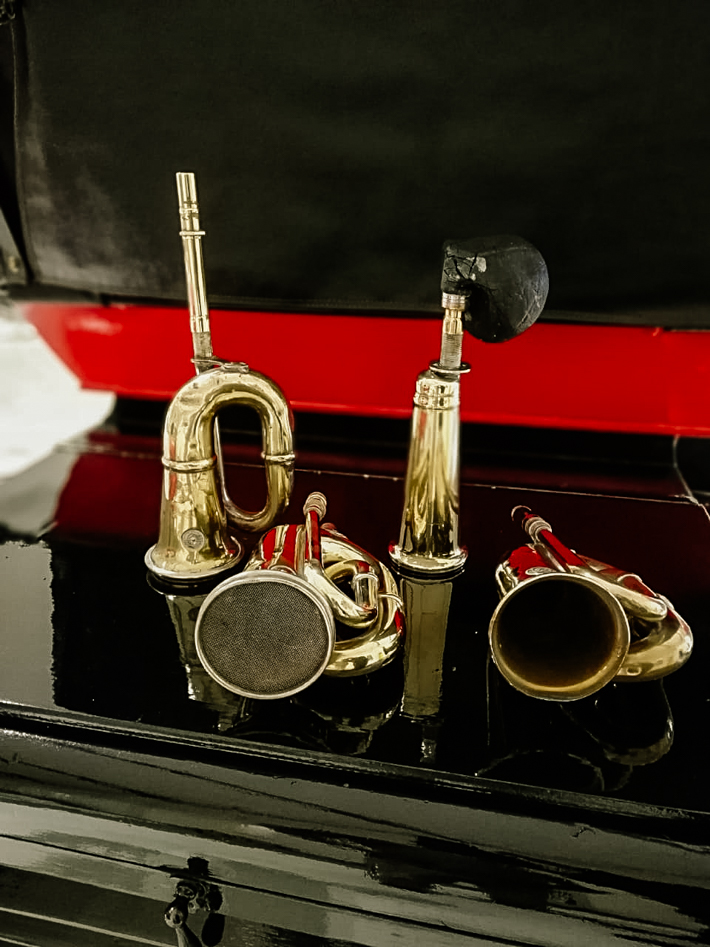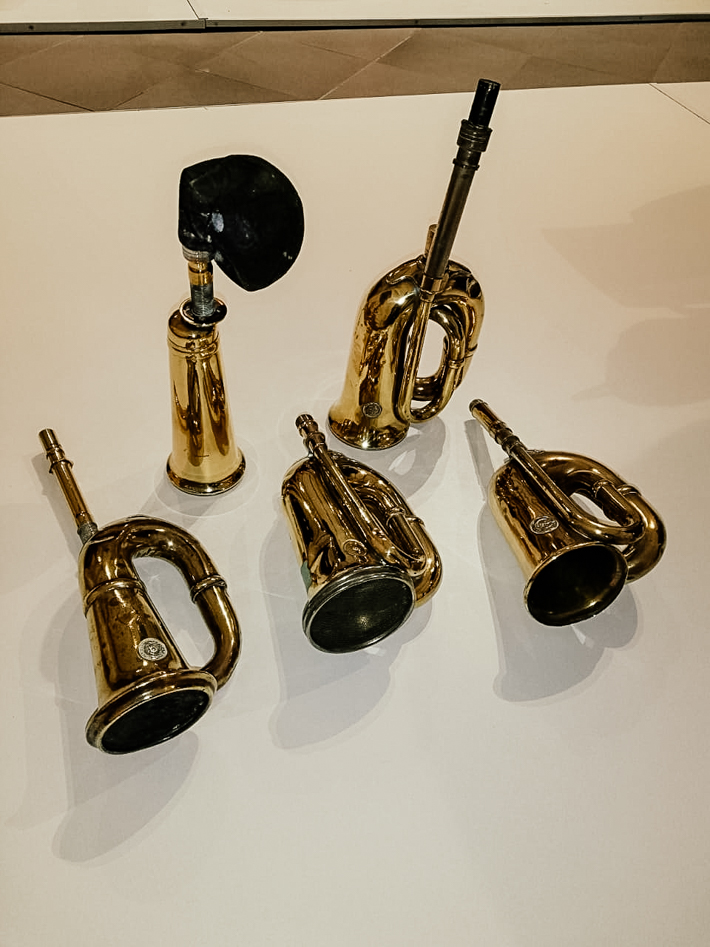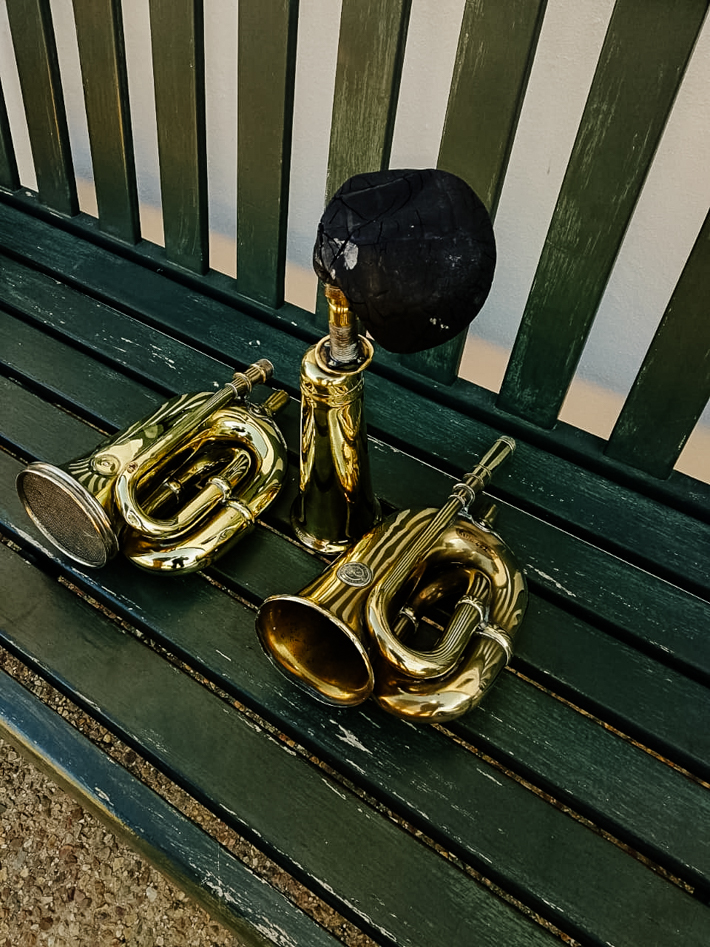
25 May Memorabilia: Horn / Hooter
This month FMM assistant curator Cheslynne Ruiters huffs and puffs and blows his own trumpet describing the early days of the horn…
Long before the days of freeways, back-up cameras and drive-throughs, motorists made use of warning devices to alert other road users to their approach or possible danger, most common of which was the horn. This device can help save lives, infuriate other drivers and pedestrians, and even cause sleepless nights for city dwellers, but have you ever wondered where this quintessential caution device came from? Or how car horns have changed through the years?
A horn, or hooter, is a sound-making device that can be equipped to all modes of transport and was one of the first accessories fitted to horseless carriages at the dawn of the automobile. Initially they were activated by squeezing a rubber bulb at the end of the trumpet, but in 1910 Oliver Lucas of Birmingham, England, developed a standard electric car horn. These are activated by a flat, circular steel diaphragm that has an electromagnet acting on it in one direction and a spring pulling in the opposite direction. The diaphragm is attached to contact points that repeatedly interrupt the current to the electromagnet, causing the diaphragm to spring back the other way to complete the circuit again. This arrangement opens and closes the circuit hundreds of times per second, which creates a loud noise like a buzzer or electric bell.
The Klaxon, which was patented in 1908, produced its sound with an electrically powered vibrating metal diaphragm. The name was derived by the Greek word klaxo, meaning ‘to shriek’, and was the first horn to need ‘just a touch’ rather than to be more physically sounded. But its use began to fade away by the 1930s.
One of the more popular car horns in the 1910s and ’20s was the Gabriel, named after the horn-tooting angel. The Gabriel was a multi-toned exhaust horn whose sound was touted as being both powerful and pleasing to the ear, the most memorable of which being a distinctive ‘Aoogha’ sound.
Modern horns last longer and use less power and less electronic magnetic interference than before.





